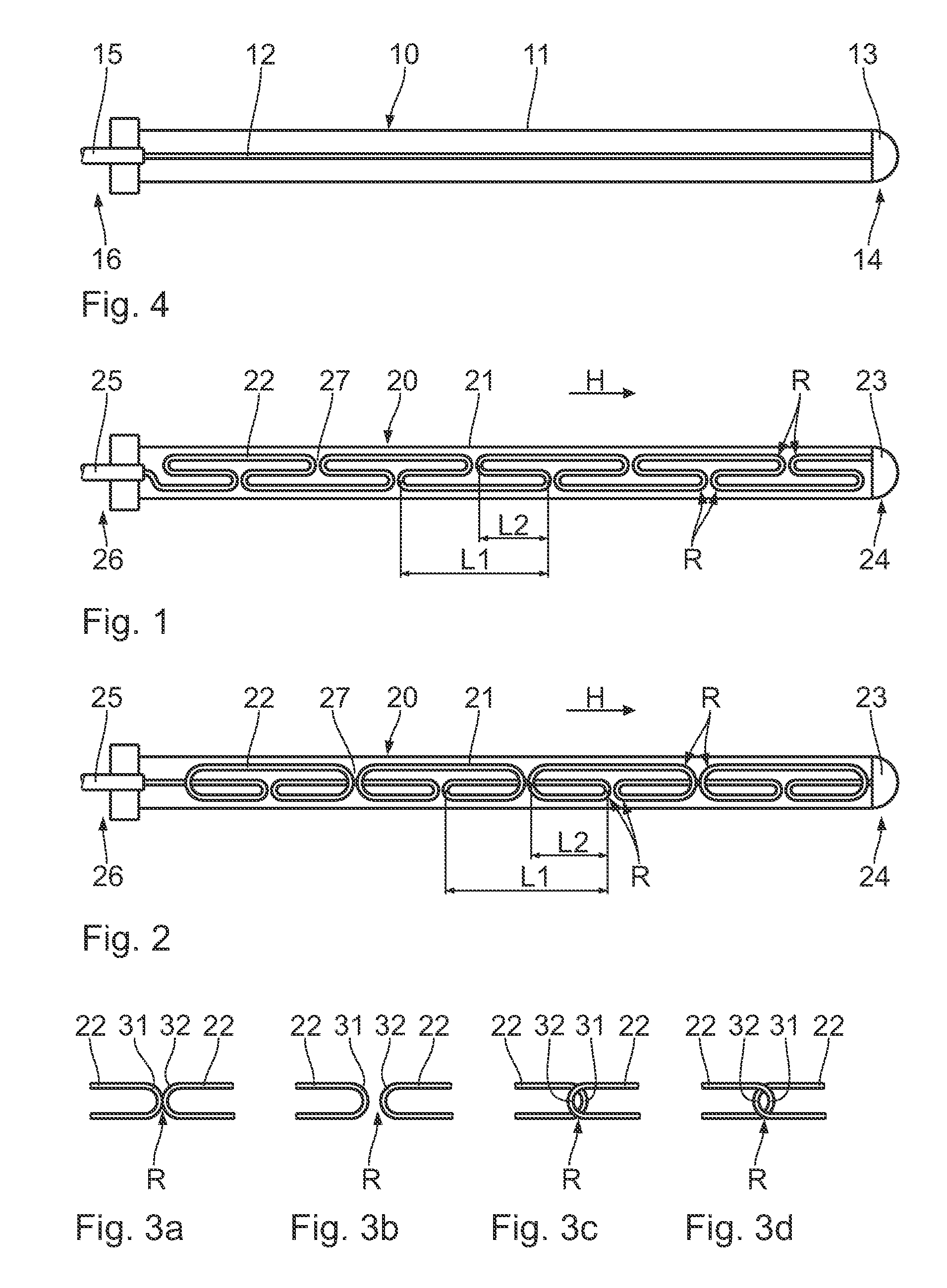Electrode catheter for intervention purposes
a technology of electrode catheter and electrode electrode, which is applied in the field of electrode electrode catheter for intervention purposes, can solve the problems of affecting the use of the device, and the inability of electrophysiological examination and intervention, such as ablation, and complicating production, so as to improve the usability of radiation fields and reduce the sensitivity. , the effect of good coupling of the supply lin
- Summary
- Abstract
- Description
- Claims
- Application Information
AI Technical Summary
Benefits of technology
Problems solved by technology
Method used
Image
Examples
Embodiment Construction
[0030]FIG. 4 schematically shows the prior art in the form a longitudinal section through an electrode catheter 10. The supply line 12 is essentially housed stretched in the shaft 11 of the electrode catheter 10. The supply line connects the electrode pole 13 at the distal end 14 of the electrode catheter to the connector 15, which produces the electrical connection to a device, at the proximal end 16 of the electrode catheter 10. Treatment devices such as implantable or external stimulators, cardiac pacemakers, or defibrillators are viewed as the device. However, diagnostic devices or combinations of treatment and diagnostic devices are also conceivable.
[0031]FIGS. 1 and 2 schematically show various embodiments of the configuration of a supply line 22 in the shaft 21 of an electrode catheter 20 according to the present invention. The supply line connects the electrode pole 23 at the distal end 24 of the electrode catheter to the connector 25 at the proximal end 26 of the electrode ...
PUM
 Login to View More
Login to View More Abstract
Description
Claims
Application Information
 Login to View More
Login to View More - R&D
- Intellectual Property
- Life Sciences
- Materials
- Tech Scout
- Unparalleled Data Quality
- Higher Quality Content
- 60% Fewer Hallucinations
Browse by: Latest US Patents, China's latest patents, Technical Efficacy Thesaurus, Application Domain, Technology Topic, Popular Technical Reports.
© 2025 PatSnap. All rights reserved.Legal|Privacy policy|Modern Slavery Act Transparency Statement|Sitemap|About US| Contact US: help@patsnap.com



